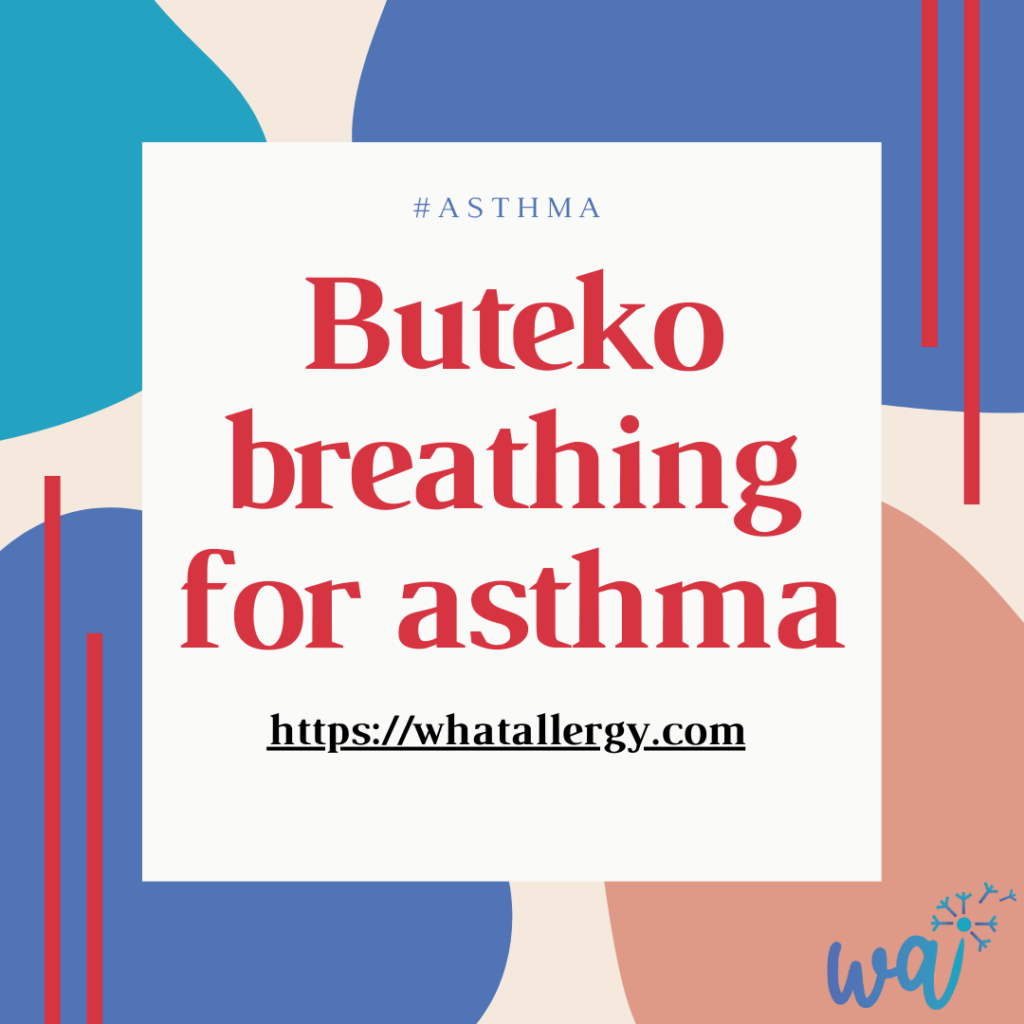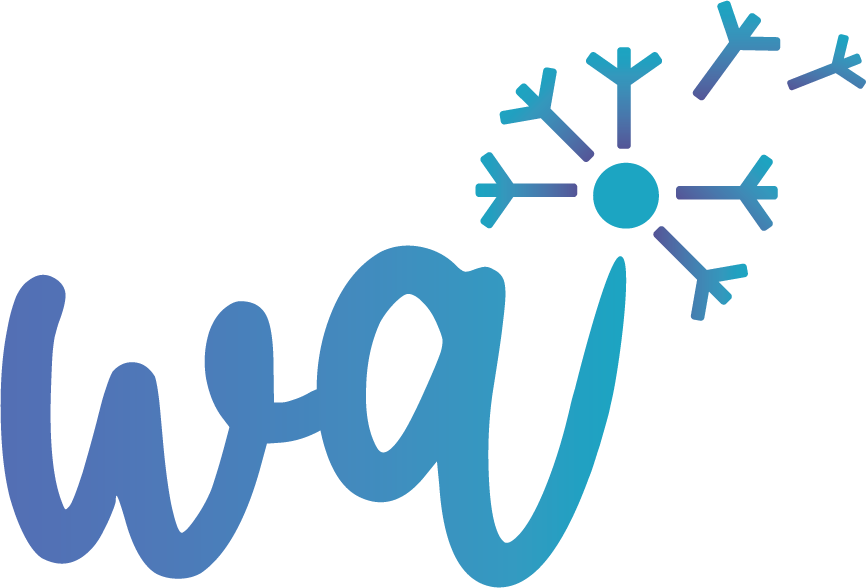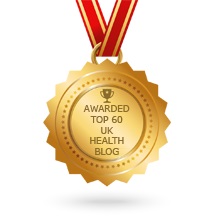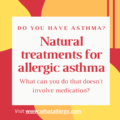I have been so blown away by the incredible power of Buteyko Breathing that I just have to keep sharing about it. Since cutting out topical steroids and then stopping my asthma medication (initially by mistake) this breathing technique has enabled me to ditch the inhalers.

“It works just like my blue inhaler, arguably even better.“
Ruth Holroyd on Buteyko breathing for asthma
I still get wheezy now and then, and when I do I will simply stand tall, breathe in and out slowly and hold my breath for as long as I can. That’s it pretty much, it’s that easy. Ideally you could also nod your head and walk around slowly at the same time, it just works better if you do. The Buteyko Breathing seems to loosen phlegm and make me cough and the wheezing passes and stops, often with only one cycle of Buteyko breathing. However I’ll do it a few times to really clear things. It’s safe, simple and avoids the need for any drugs. You can do this sitting down or laying in bed also, but it works best standing and walking.
How did I hear about Buteyko Breathing?
Initially an asthma nurse told me about it at a check-up, but she didn’t demonstrate it or explain it fully. I didn’t actually start doing it until the last few years, but I feel that is she’d believed more strongly in this technique, shown me how and walked me though it I may have discovered this magic healing method far sooner. I can’t blame her entirely, but I really wish I had started doing it at that time. Because it’s changed my life as far as asthma goes. I can’t remember the last time I needed my blue inhaler and I no longer use a preventative inhaler either.
This all began to happen with I cut out topical steroids and I’m convinced there is some connection.
Why are we not teaching kids and adults this breathing technique? Seriously EVERY person with asthma should be taught because I believe it could even save lives. How many times have you been caught out without your inhaler? Left it at home or in another bag, hidden in a different coat pocket… or even just run out of the drug inside so you’re puffing at nothing. It’s a horrible, terrifying feeling as the breathlessness takes over.
Why mouth breathing doesn’t help asthma
Another common problem for people with allergies and asthma is that often their noses and sinuses are blocked so they can’t breathe through their nose. However we are meant to breathe through our noses, they have loads of hairs lining them which catch pollen and allergens so if you don’t or can’t breathe in through your nose you’re missing out a stage of that natural filtering process. Breathing in through your mouth lets all pollen and allergens straight into your body, mouth, gut and there the problems begin.
Also try Pranyama breathing
Pranyama breathing, or alternate nostril breathing helps me relax, reduce anxiety and also encourages that all important nose breathing.
What is wrong breathing?
“When someone talks about ‘wrong breathing’, it means he or she doesn’t understand my discovery,” – said Dr. Konstantin Pavlovich Buteyko – “in physiology there is only the concept: the norm. The deviation from the norm is disease. Therefore we don’t talk about ‘wrong body temperature’ or ‘wrong blood pressure’ and for breathing it is exactly the same. But deep breathing is a deviation from the norm. So this is a disease.”
Deep breathing causes various disturbances in the body. The body tries to compensate for these disturbances: the airways are constricted, the blood vessels are constricted, the nervous system becomes stressed, etc. It is clear that, as breathing is reduced to the norm, these adjustments are no longer necessary for the body and health is restored.
It is now a clear fact, which has been confirmed by all published studies, that development and first stages of asthma are always accompanied by hyperventilation. The situation with medical respiratory professionals and asthma was accurately reflected by Peter Kolb,
“… asthma is a disorder which is investigated by thousands of respiratory specialists with millions of dollars worth of equipment to measure breathing. Yet after more than half a century of work by all these people measuring patients’ breathing, they haven’t picked up that asthmatics are just breathing too much” (Kolb, private communication, 2001)
.
I think what Peter Kolb is saying is that we immediately panic and start to try really hard to get that breath into our lungs. I can feel the sensation and remember many times when I’ve struggled and struggled to get my breath in. It’s horrible, painful and it usually ends with a worse and worse asthma attack. With Buteyko Breathing you just breathe in and out as you would normally and hold your breathe. It sounds so counter intuitive but it really works.
This study into Buteyko breathing had staggering results
Clinical trial conducted at the Mater Hospital, Brisbane, Australia
Buteyko breathing techniques in asthma: a blinded randomised controlled trial.
Simon D Bowler, Amanda Green and Charles A Mitchell
The study was carried out from January 1995 to April 1995.
Buteyko group:
Bronchodilators after 3 months: 96% less
Inhaled steroids after 3 months 49% less
Reduction of symptom scores after 3 months: 71%
Control group:
Bronchodilators after 3 months: 7% less
Inhaled steroids after 3 months: remained the same
Reduction of symptom scores after 3 months: 14%
On the 2 pages below you can read how to do the Buteyko breathing normalisation exercises:
Marina Buteyko, Vladimir Buteyko – THE FIRST-HAND BUTEYKO METHOD:
Getting Started with the Buteyko Method – by Peter Kolb. Visit https://buteykoclinic.com/
Please give it a try, it’s truly phenomenal.
Watch this video showing how to do Buteyko breathing
This video demonstrates how to unblock the nose and decongest in just five minutes and get you breathing through your nose again.
What happens when you try it? Please give it a go now and post your comments below.
This is a real case of where less is more…












Leave a Reply